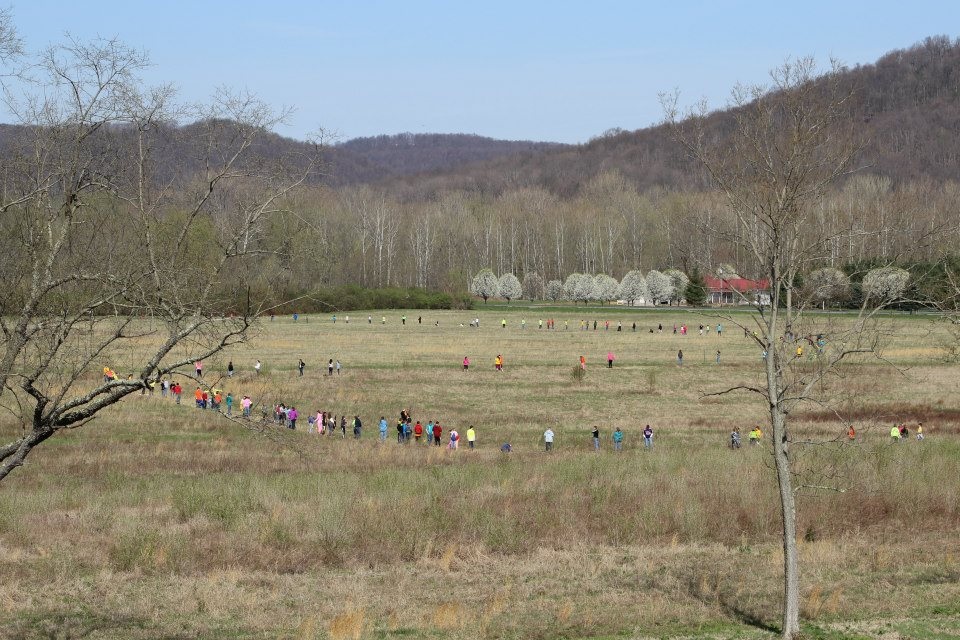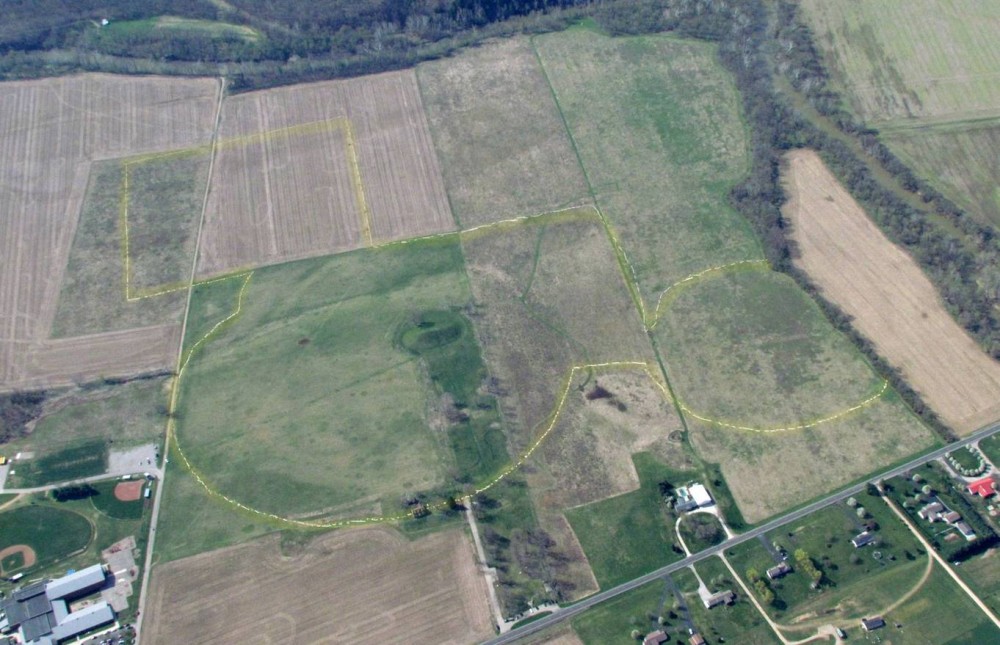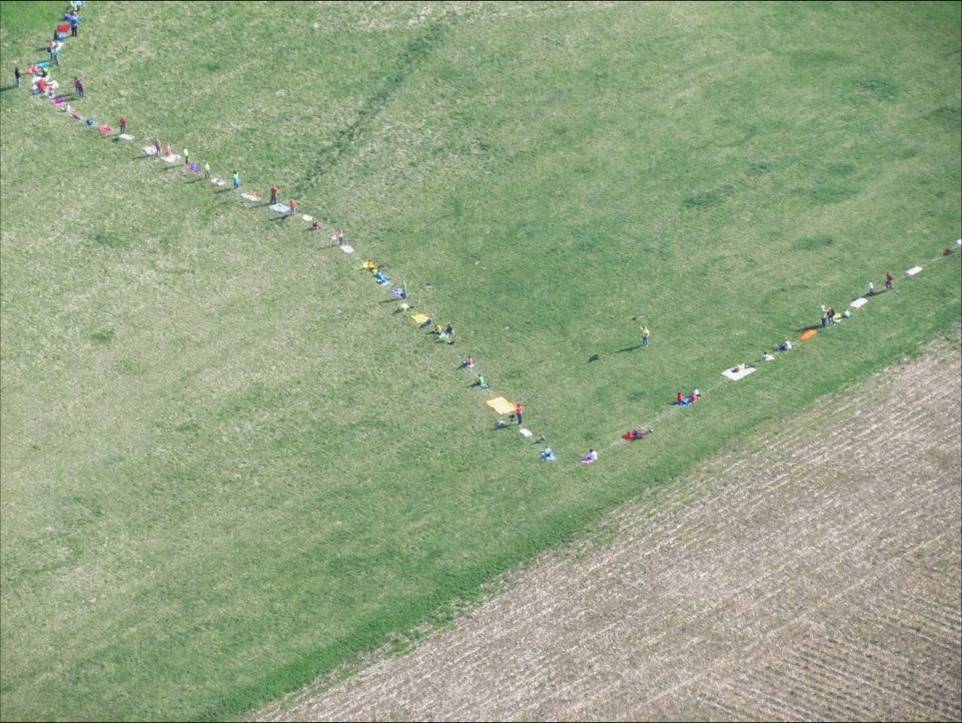The following guest blog was written by Bruce Lombardo, Park Ranger at Hopewell Culture National Historical Park. 
Hopewell Culture National Historical Park and Paint Valley Local School in Bainbridge, Ohio, coordinated a historic event this week. On Thursday, April 17, 2014, the Living Earthwork Event was a unique opportunity to celebrate and discover the Hopewell Culture of Southern Ohio. Paint Valley Local Schools are located next to a nationally protected historical site named the Seip Earthworks. Over 1,200 students and staff of Paint Valley Schools and McClain High School of Greenfield, outlined the original 2.3 mile earthen embankment wall system of the Seip Earthworks. Meanwhile, an aerial photo was taken from overhead.
As it turned out, the Seip Earthworks complex is so enormous that in order to capture the whole site, the pilot had to climb high in the sky. Consequently, the students barely show up in the photos of the entire complex. A transparent yellow line has been drawn over the photo to show the line of students. From the ground level however, the effect was awe-inspiring. The enormity of the complex was clearly evident. The original walls must have stretched out as far as the eye could see. On Thursday, from any vantage point in the complex, the students at the far edge were tiny dots in the distance. Seip Earthwork was built by Native Americans of the Hopewell Culture, who thrived in this area between 100 BC to AD 400. Seip is one of the five tripartite complexes built by the Hopewell in Ross County. These intriguing complexes are remarkably similar in design and dimensions, even though they were built miles apart from each other during a period that spanned several centuries. The big circle, little circle and square pattern is visible in the outlined photo.

Aerial view of the Seip Earthworks. A transparent yellow line has been drawn over the photo to show the line of students.
Seip’s great circle is irregular on one side, where it was built along the edge of a river terrace, but the 1,500 foot diameter of the circular portion is nearly identical to the dimensions of circles of at least two other giant circular enclosures in the other tripartite complexes. A 1,500 foot diameter circle is so enormous five football fields end to end that it is difficult to imagine how the Hopewell engineers managed to build such nearly perfect geometric shapes. An archaeological investigation by the Ohio Historical Society in 1966 suggests that the embankment walls enclosing the great circle may have been ten feet high. In the middle of the great circle is Seip’s central mound. Excavated and reconstructed in the 1920s by the Ohio Historical Society, it is one of the largest existing Hopewell burial mounds. It is visible in the middle of the photo. At 30 feet high and 240 feet long, this impressive monument is one of the largest burial mounds the Hopewell ever built.  Due to the enormity of their ancient monuments, it seems clear that the Hopewell did not build their great earthworks individually, but as a group effort. In the spirit of this teamwork, students from area schools were invited to make a pilgrimage to the ancient ceremonial site and participate in bringing the earthwork back into view for the first time in the modern world.
Due to the enormity of their ancient monuments, it seems clear that the Hopewell did not build their great earthworks individually, but as a group effort. In the spirit of this teamwork, students from area schools were invited to make a pilgrimage to the ancient ceremonial site and participate in bringing the earthwork back into view for the first time in the modern world.
Bruce Lombardo, Hopewell Culture National Historical Park